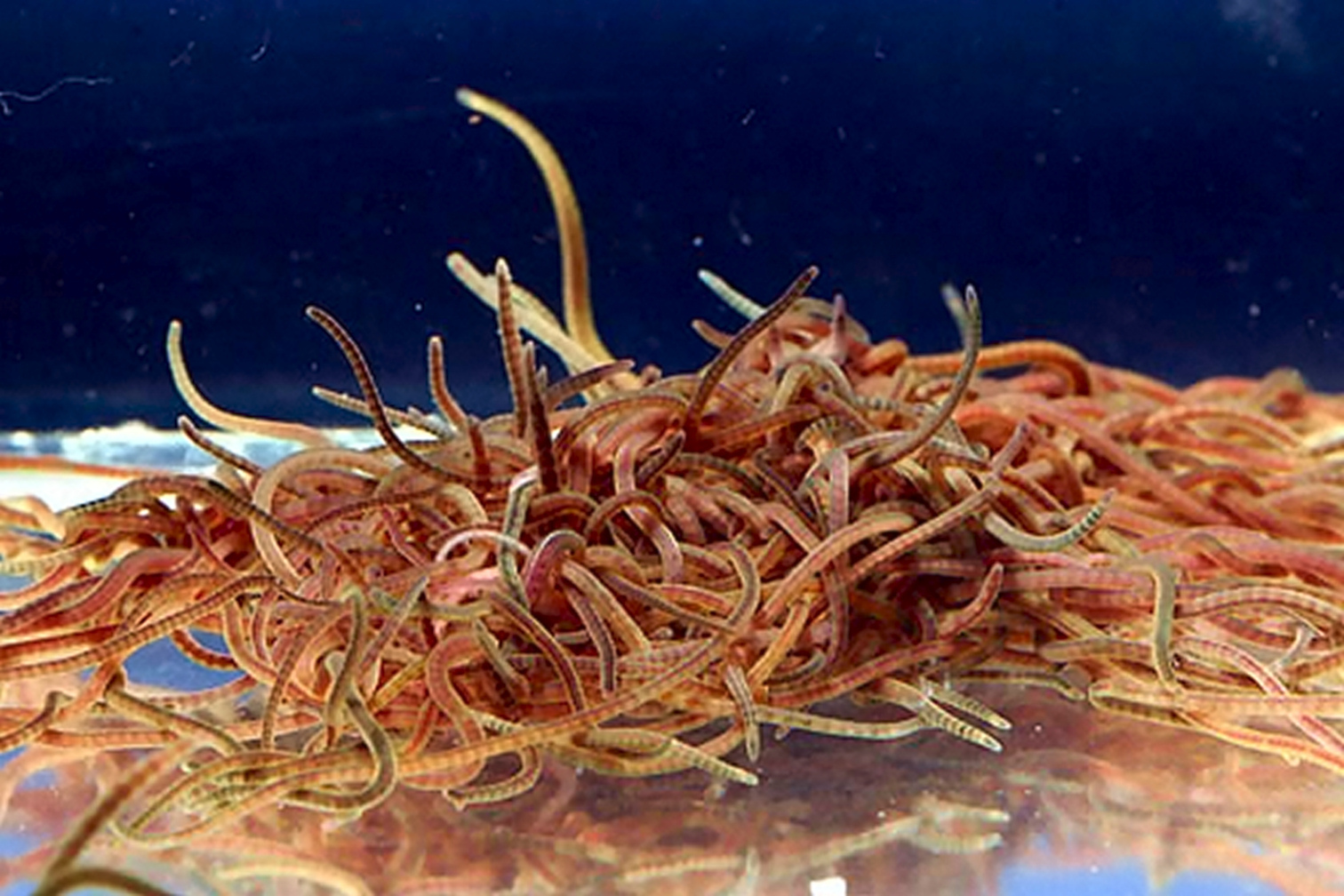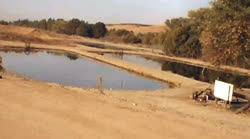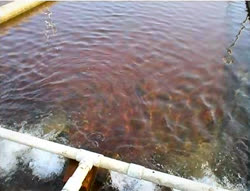(Lumbriculus variegatus)
Black worms, or "trout" worms, suddenly appeared on the scene around 1980 along with the subsequent disappearance of Tubifex from the US and Canada. Tubifex were well documented - they were mentioned in nearly every Tropical Fish book ever written but right after the 1970s they were seldom if ever again available commercially.
The reason is their habitat - they are sewer worms that feed exclusively on "organic anaerobic sludge" and thus can only be found in nature in the most filty conditions imaginable and if human waste is in any way a component then they are obviously going to be a disease vector and I know of at least one case of hepatitis in Los Angeles that was attributed to Tubifex in the 1980s.
The worms were deprecated and as a replacement, "black" worms showed up. Larger and far more disgusting than even Tubifex they don't carry disease like Tubifex do an fish seemed to like them even more. \
It was confusing in the early 1980s to see all books talk about Tubifex and never mention black worms yet that was all you could buy. More so, little or noting was known about them. In the first fifteen years of Internet discussion of tropical fish, these two comments were about it as far as an explanation went.
Robert Nhan of San Jose (now Fremont) has done it with Blackworms. Seven 10G
tanks with deep (2-3") fine (30 grit) sand and heavy aeration. Seed all
with a pound or so (total) of worms, and feed daily with cheap flake fish
food, as heavily as possible without bad bacterial bloom. Do *lots* of water
changes. On week three, start harvesting half a tank per day, and the other
halves on week 4. Week five go back to the first halves, etc.
Lots of work and tank space for modest worm harvests. No guarantee that
bacteria will be much lower than from the store, tho. Unless you hand sort
the starting worms, there's no guarantee you won't have planaria. Hydra
can't live without live food, so they probably will die, of course. [Then
they will come in on your plants, anyway. :-)]
Dan Carson, of Hawaii has done it in big trays with real Tubifex, and using
lava cinders (decorative stuff from garden shop) as the substrate. 150%
weekly water changes were needed.
All too labor intensive, for me. I could raise a *lot* of fish in 7 10G
tanks, and buy lots more worms with their sale. YMMV.
Wright Huntley, 1999
Jim Flowers has a "worm farm" off the Stanislaus River. The water is pumped out of the river so high water levels doesn't affect production.
John Waggin has "worm farms" leased from the State of California Department of Fish and Game at Moccasin Fish Hatchery, a fish hatchery on the Merced River near Snelling, and below Friant Dam at the old fish hatchery on the San Joaquin River.
Jim and John supply most of the United States with black worms (not tubifex) including all the wholesalers in the LA area.
I consider Jim's worms the best (although both are nearly equal) because Jim feeds and grows his worms in beds and doesn't use fish waste for food. The fresh water and the fish waste causes John's worms to also be high quality. Worms that sit around too long regardless of the source can cause problems.
Tony Pinto, 1999
Blackworms have been
used as aquatic composters.





